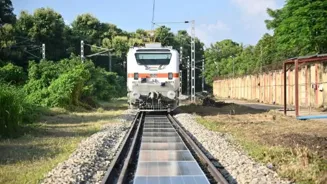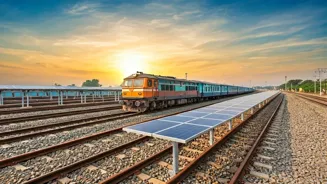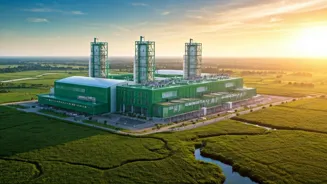Renewable Energy: Bright Future Ahead, Innovations Powering Change. Discover how India is embracing clean energy sources
The way India gets its power is changing, and it's all thanks to renewable energy.
Forget the old coal plants; solar, wind, and other clean sources are stepping up. These sources not only reduce pollution but also promise a more sustainable and secure energy supply for the nation.
Innovations are making renewable energy cheaper, more efficient, and more reliable than ever before.
Solar Power Advancements: Shining Brighter
India's sunshine advantage makes solar power a top contender. Scientists are working hard to improve solar panels. One major area is increasing efficiency. New materials and designs squeeze more electricity from the same amount of sunlight.
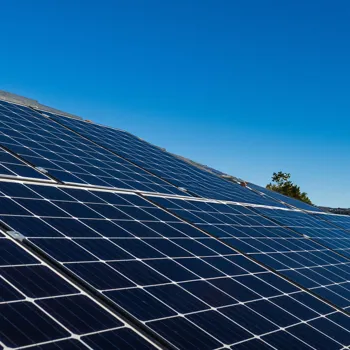
Imagine solar panels so good they can power entire communities! Another innovation is solar glass, this can be implemented in big buildings to reduce energy consumption. These panels can be integrated into buildings, making them look nice whilst generating power.
Innovations in energy storage are also crucial. Better batteries mean solar energy can be used even when the sun isn't shining, making it a consistent power source.
Wind Energy's Rise: Catching the Breeze
Wind energy is also playing a big role. Wind turbines are getting taller and more powerful, to capture more winds. Offshore wind farms, located in the sea, are also starting to develop. Newer designs of turbines have been more compact and quiet.
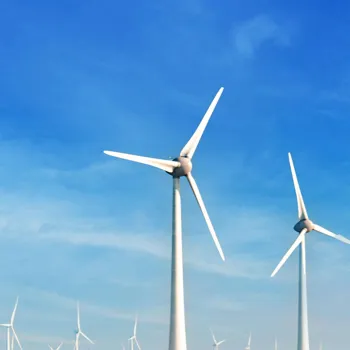
These reduce impact on local community, and make them easier to install. Also, wind energy can work hand-in-hand with solar. In combination with big batteries to store energy, the combination will make these sources of power more reliable than traditional sources.
Government policies are also promoting wind energy, with incentives and subsidies to encourage investments in the sector.
Hydropower's Potential: Tapping into Water
Hydropower, using the power of flowing water, has long been a source of electricity. Small hydropower projects, which have less environmental impact than large dams, are becoming more popular. Pumped storage hydropower is another exciting area.
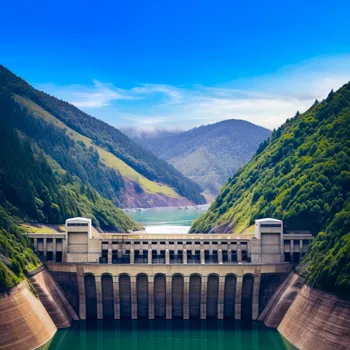
This involves pumping water uphill to a reservoir and then releasing it to generate electricity when needed. It can be used to store excess energy from solar and wind, this makes it a better way to keep power flowing.
Hydropower has to be used carefully, keeping in mind the impact on rivers and communities.
Biomass Energy: Power from Nature
Biomass energy uses organic matter, like agricultural waste, to create electricity and heat. Technologies are constantly improving to make biomass energy cleaner and more efficient.
One area is biogas production, where organic matter is broken down to produce methane gas, which can be burned for electricity or heat. Biomass can help with waste management, turning waste products into usable energy. It also supports rural economies by providing new income sources for farmers.
Geothermal Energy: Earth's Inner Heat
Geothermal energy taps into the heat beneath the Earth's surface to generate electricity. India has a good geothermal potential, specially in certain Himalayan regions.
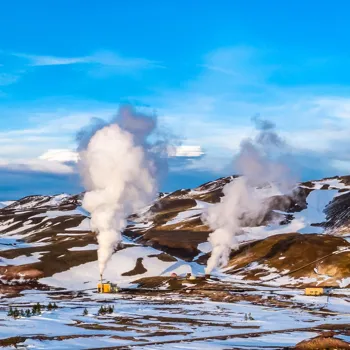
Innovation focuses on enhancing geothermal system (EGS), in which fluids are pumped into hot, dry rocks underground to extract heat. It requires a lot of investment and can be dangerous. Geothermal energy is a reliable source of power, not depending on weather conditions.
Energy Storage Solutions: Power on Demand
Energy storage is key to making renewable energy work reliably. Batteries are the most common storage solution, and technology is improving to make them cheaper, smaller, and more efficient. Pumped hydro storage, as mentioned before, is another option.
Other innovative technologies like compressed air energy storage and thermal energy storage are also being explored. Better energy storage means renewable energy can be used whenever it's needed, even when the sun isn't shining or the wind isn't blowing.
Smart Grids: Managing the Flow
Smart grids use technology to manage the flow of electricity more efficiently. Smart grids can automatically adjust to changes in demand and supply, for example when solar power goes down at sunset.
Smart meters give consumers more control over their energy usage, helping them save money and reduce waste. Smart grids are essential for integrating renewable energy into the power system, ensuring a stable and reliable supply for everyone.
Green Hydrogen: The Fuel of the Future?
Green hydrogen, produced using renewable energy to split water, is a promising clean fuel. It can be used in fuel cells to power vehicles, generate electricity, and even decarbonize industries like steel and cement.
Whilst still in early stages, green hydrogen has immense potential to transform the energy landscape, although it requires further infrastructure. Government are pushing towards the use of green hydrogen because this will help get rid of polution.
The Road Ahead
These innovations aren't just dreams; they're becoming reality. With continued investment, supportive policies, and talented engineers, India can become a leader in renewable energy.
This will not only help the environment but also create new jobs, improve energy security, and power a brighter future for all Indians.
AI Generated Content. Glance/InMobi shall have no liability for the content
